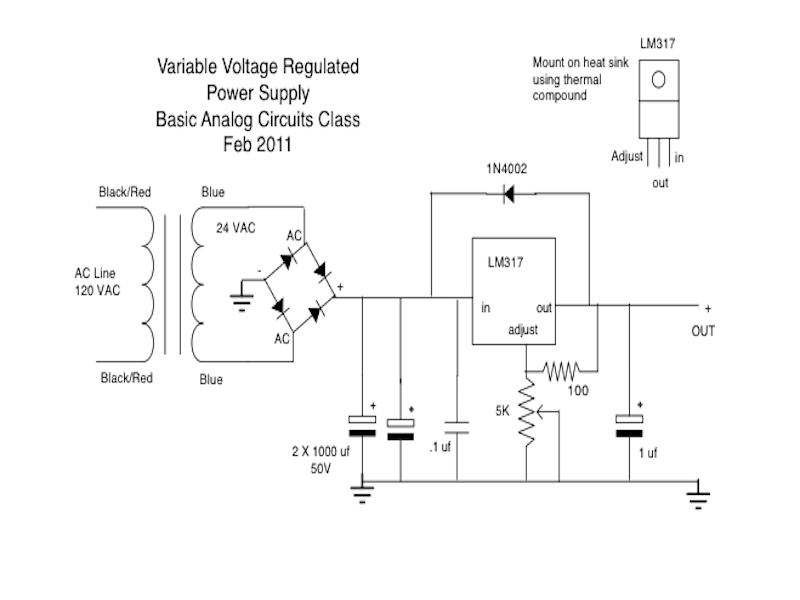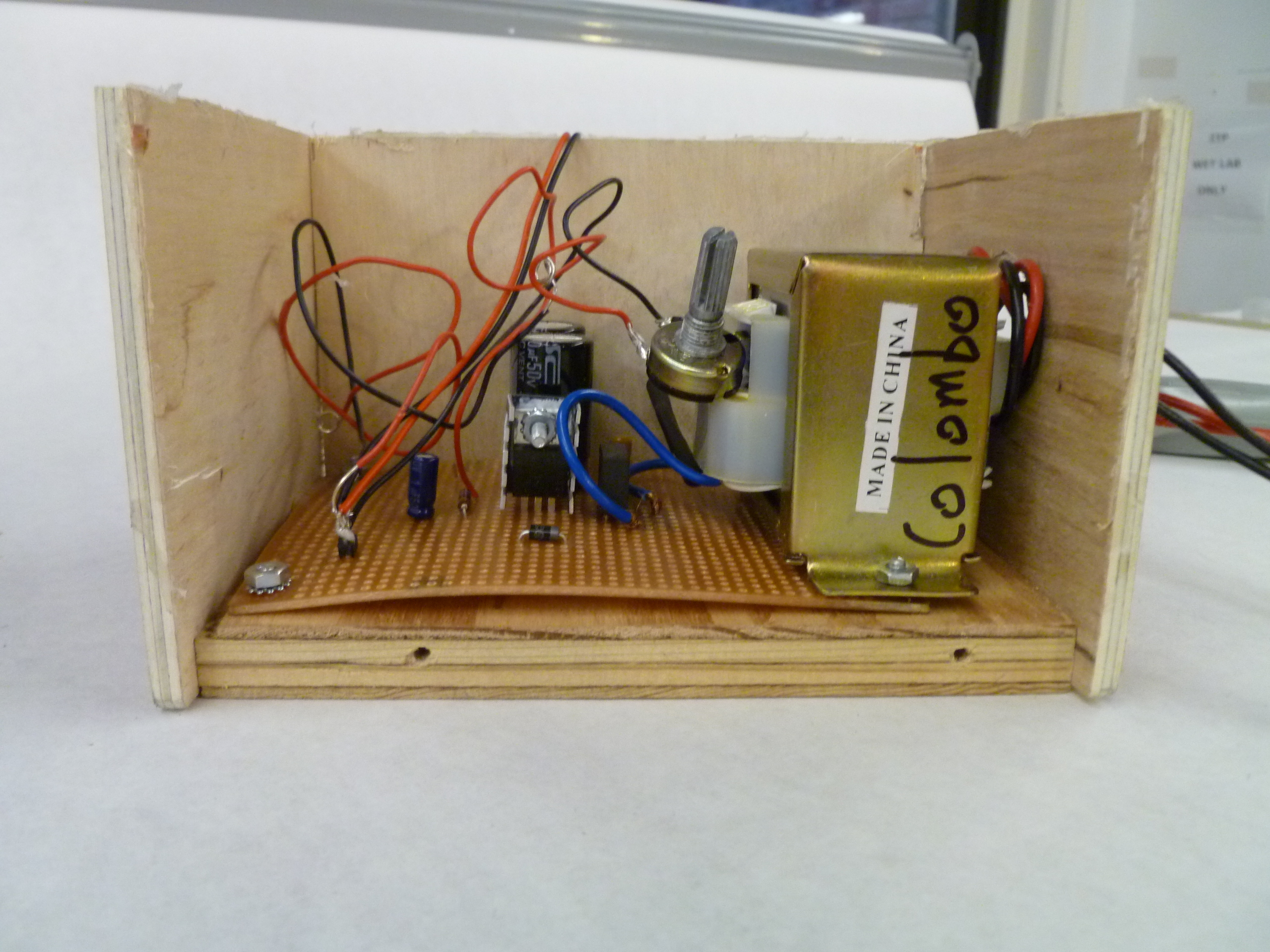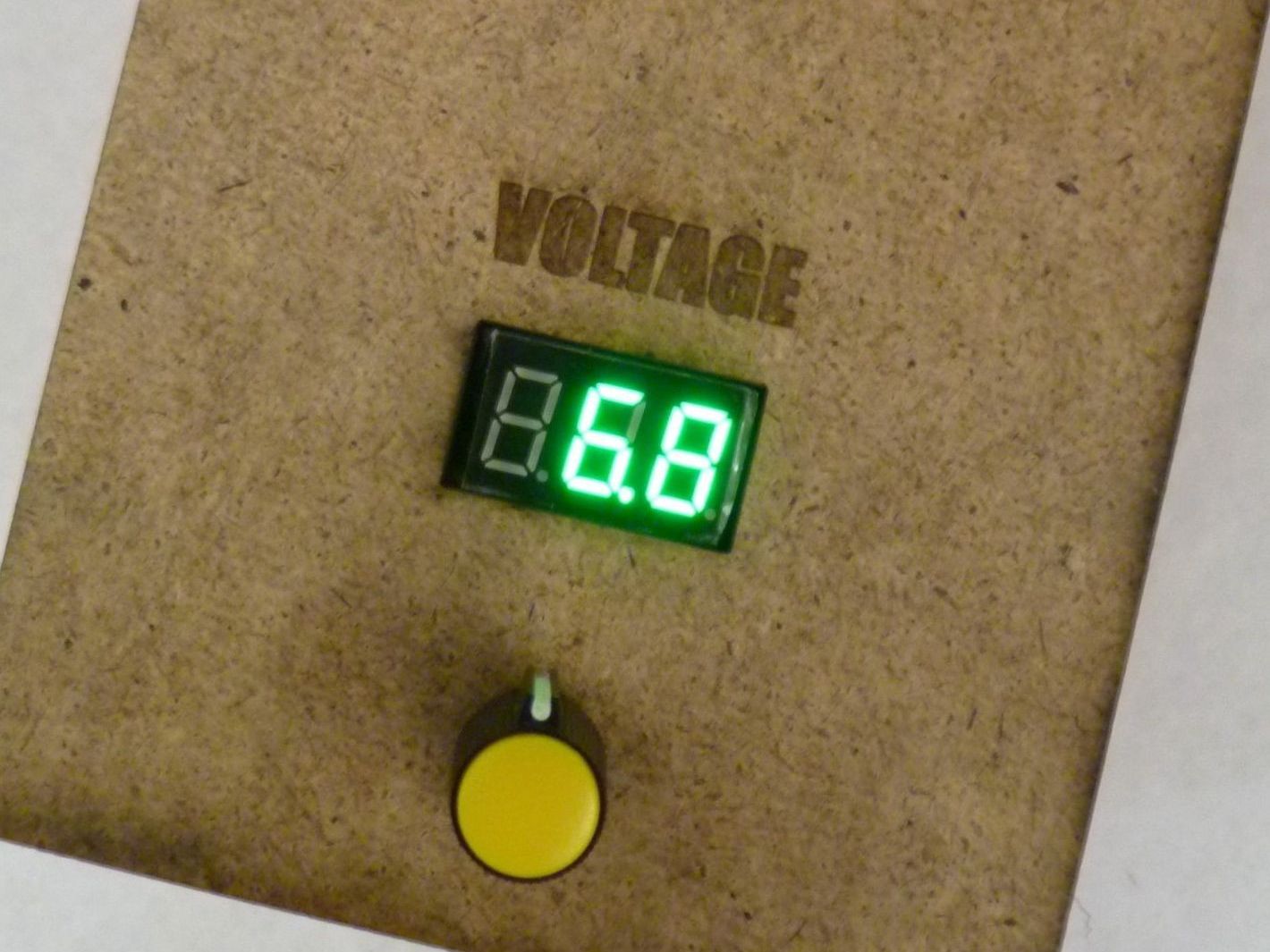Hobbyist electronics projects need robust, reliable power supplies for prototyping and testing. I learned how to build this circuit from the Basic Analog Circuits class at ITP taught by Eric Rosenthal, but took it several steps further in building a solid enclosure and integrating a voltage meter. Now it lives on my desk, ready to power most small projects I’m working on.
You’ll see example shots of point-to-point wiring of components to perfboard while following a schematic for this power supply. A wood enclosure is built, and Adafruit’s Mini Volt Meter, Vout posts, and a potentiometer are mounted in the final product.
Parts List:
- One 3×5″ perfboard
- LM317 variable voltage regulator
- BR805D Bridge Rectifier
- Heat Sink
- 120 VAC to 24 VDC transformer (mine is part number LP-575)
- Power cable
- Two 1000 microfarad capacitors
- One 0.1 microfarad capacitor
- One 1 microfarad capacitor
- One 100 ohm resistor
- One 5k ohm variable resistor
- One 1N4002 diode
- 1/2″ plywood
- 1/8″ wood or MDF
- six half inch wood screws
- 8 1/2″ long x 1/8″ wide nuts and bolts
- Plastic knob
- Mini volt meter from Adafruit Industries
















